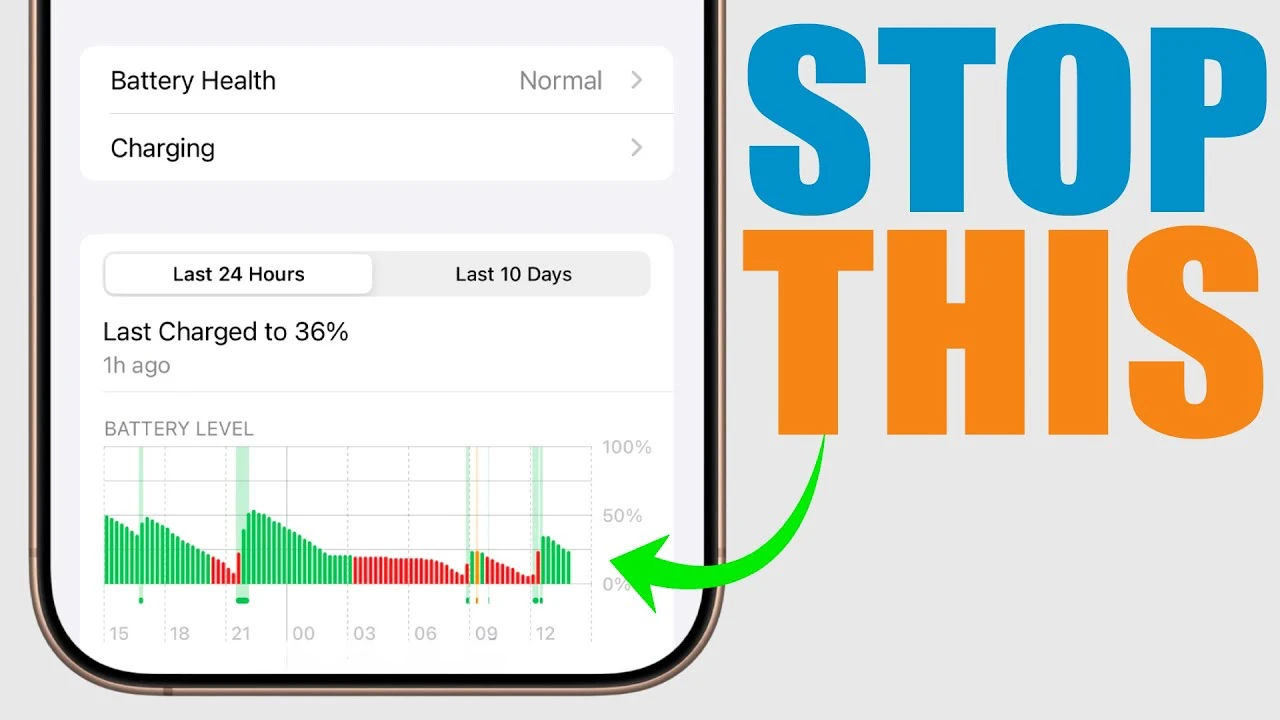
Your iPhone battery is the lifeline of your device, yet many users unknowingly adopt habits that degrade its performance and shorten its lifespan. By identifying and avoiding these common pitfalls, you can enhance your battery’s health and ensure your device runs efficiently for years. Below, we break down eight frequent mistakes and provide practical solutions to help you get the most out of your iPhone battery.
1. Charging to 100% Regularly
It might seem logical to fully charge your iPhone, but doing so consistently can harm its lithium-ion battery over time. These batteries perform best when kept between 20% and 90% charge. To protect your battery, enable the “Optimized Battery Charging” feature in iOS. This setting slows charging after 80%, reducing wear and extending battery life. By keeping your battery charge within this optimal range, you can significantly prolong its lifespan and maintain its capacity over time.
2. Letting the Battery Fully Drain
Allowing your iPhone to drop below 20% frequently can cause long-term damage. Deep discharges strain the battery, reducing its overall capacity. Instead, aim to charge your device when it reaches around 20% and unplug it once it hits 90%. This simple adjustment can significantly extend your battery’s lifespan. By avoiding complete discharges and keeping your battery within the recommended range, you minimize the stress on the battery and prevent unnecessary degradation.
3. Ignoring Temperature Extremes
Your iPhone battery is highly sensitive to extreme temperatures. Charging in very hot or cold conditions can degrade its performance and even cause permanent damage. Wireless chargers, while convenient, can generate additional heat during charging. To minimize risks, use wireless chargers sparingly and ensure your device is in a cool, ventilated space while charging. Avoid leaving your iPhone in direct sunlight or exposing it to freezing temperatures, as both can negatively impact battery health.
4. Using Non-Certified Accessories
Non-certified chargers and cables might save you money upfront, but they can harm your iPhone battery in the long run. Apple-certified accessories meet strict safety and performance standards, reducing the risk of overheating or electrical damage. Look for the “Made for iPhone” (MFi) label when purchasing charging accessories to ensure compatibility and safety. Using certified accessories not only protects your battery but also prevents potential data loss or device malfunction caused by subpar components.
5. Relying on Public Charging Ports
Public charging stations, such as those in airports or cafes, can expose your device to cybersecurity risks. Hackers can exploit these ports to access your data or install malicious software. To protect your iPhone, carry a portable power bank or use a USB data blocker when charging in public spaces. These precautions help safeguard your personal information and prevent unauthorized access to your device while ensuring your battery remains charged when you need it most.
6. Skipping Software Updates
iOS updates often include improvements that enhance battery performance and efficiency. By keeping your software up to date, you ensure your device benefits from the latest advancements in battery management. Similarly, updating your apps can prevent unnecessary background activity that drains your battery. Regularly check for and install updates to optimize your iPhone’s performance and extend its battery life. These updates also address security vulnerabilities, providing an added layer of protection for your device and data.
7. Neglecting Battery Health Monitoring
Your iPhone includes a built-in tool to monitor battery health, accessible in the Settings app under “Battery.” This feature shows your battery’s maximum capacity and peak performance capability. If the capacity drops below 80%, it’s time to consider a battery replacement to maintain optimal performance. Regularly monitoring your battery health allows you to identify potential issues early on and take proactive measures to address them, ensuring your iPhone remains reliable and efficient.
8. Overusing Location Services
While location services are essential for navigation and certain apps, they can drain your battery if left unchecked. To reduce unnecessary battery consumption, disable location services for apps that don’t need them. Go to Settings > Privacy > Location Services to customize permissions and limit usage to only when necessary. By selectively allowing location services, you can significantly reduce battery drain without compromising the functionality of your favorite apps.
Tips to Optimize Your Battery
- Enable “Optimized Battery Charging” to keep your battery within the optimal 20-90% range
- Avoid letting your battery fully drain below 20% to prevent long-term damage
- Protect your battery from extreme temperatures and use wireless chargers sparingly
- Use Apple-certified accessories to ensure safety and compatibility
- Carry a portable power bank or use a USB data blocker when charging in public spaces
- Keep your iOS and apps up to date to benefit from battery performance improvements
- Monitor your battery health regularly and consider a replacement if capacity drops below 80%
- Customize location services permissions to reduce unnecessary battery drain
By addressing these common mistakes and implementing the recommended solutions, you can significantly improve your iPhone’s battery performance and longevity. These small changes in your daily habits can make a big impact on your device’s efficiency, saving you from costly repairs or premature replacements. Stay proactive in managing your iPhone battery, and enjoy the benefits of a reliable, long-lasting device that keeps up with your needs.
Source & Image Credit: iReviews
Latest Geeky Gadgets Deals
Disclosure: Some of our articles include affiliate links. If you buy something through one of these links, Geeky Gadgets may earn an affiliate commission. Learn about our Disclosure Policy.